How to Pack Light for Europe (or Anywhere): the Guide You Need to Actually Make it Happen
Do you always plan to be a light packer, but then you just can’t ever seem to make it happen when you’re getting ready for vacation? Then this guide is for you.
And it isn’t just about what to pack to keep your suitcase or backpack lighter. It’s about how to think about packing light in a way that will help you to actually pack light.
This is my own personal strategy, developed over a decade of every kind of travel – from following backpacker trails through Southeast Asia and Central America, to living abroad and traveling as often as possible (with the tiniest carryon possible), to my current schedule as a full-time travel blogger – often traveling for two or three weeks in Europe with just one carryon.
But you don’t need to be on the road for weeks to make use of the packing strategy.
These tips can work for anyone. Regardless of your personal style, or even the type of trip you’re taking – a weekend getaway close to home, or a year around the world. Regardless of the weather, or your destination. And this isn’t a “packing list.” What you wear is up to you.
Instead, this is a guide for how to decide what to pack, and how to be okay with choosing to pack less.
Because I get it – packing less is hard. I’ve been there. For years, I wasn’t any good at traveling light, and I consistently packed way too much. Until I realized that more stuff usually just made travel worse.
This is a *complete guide* to packing light…
…so it’s a long read! If you want to jump straight to what you’re looking for, here are the main sections:

What you gain by packing less
Less stress!
Seriously, every time I switch hotels and have to spend more than 5 minutes getting my things back into the one configuration that makes everything fit in my bag, I swear to myself I’m going to go even lighter next time.
Bonus tip: Don’t pack your bag full. Leave some space, either for shopping, or just breathing room. (It’s no fun when it’s a struggle every time you have to zip it up.)
Packing light saves you money.
Never pay another checked-bag fee again. Plus, size and weight limits are often different (smaller) for European airlines. So if you’re packing for a Euro trip, as I often am, less stuff will definitely mean less stress and fewer fees.
Easier to get around (without feeling like an awkward tourist).
Again, especially for trips to Europe, nothing makes me feel more like an unwanted tourist than dragging loud, heavy roller bags over cobblestones and making an absolute racket in a quiet alley. The less the better. (And when I want to really go stealth, I’ll go for a good travel backpack. My favorite is the 40L Tortuga Pro, for all the reasons I outlined in my review.)
UPDATE: In April, Tortuga released a less expensive, lighter version of their travel backpack. I’ve traveled with both, and wrote up a detailed comparison of the Pro vs Lite backpacks. In short, it’s a great budget option that reduces the weight of your luggage by 1 pound, and still uses quality materials and construction.
Good to Know: Many European destinations have ancient historic centers – where you’ll likely want to book your accommodation and where the streets are too narrow for cars. Plan on walking some distance with all your luggage.

Less baggage = more secure.
Your luggage will be much safer from thieves if you can keep it with you for bus, train and ferry rides – stashed under the seat or in an overhead rack. (Large suitcase usually don’t fit in these places and have to be stored at the entrance to the train car, or in the bays underneath a bus.)
Less pollution.
The more stuff you pack, the more fuel the airplane has to use to get off the ground. (Same goes for every form of transportation – more weight means more fuel.) I know it may seem like a drop in the bucket, but it adds up when everyone is checking two giant bags for two weeks in Europe.
Okay, that’s the motivation to travel lighter. Now for the mindset tips (and a few realistic packing tips, at the end) that have made packing light actually possible for me.

The Golden Rules of Packing Light
These are my 10 packing tips that can change the way you travel.
1. Outfit repeating is okay.
This is my number 1 tip for packing lighter, for any travel, anywhere. To be honest, I’d like you to read the entire article, but this is the biggest piece of advice most people really need: Repeat. Outfits.
And that’s coming from a woman who likes to look nice, and is aiming not to stick out as an obvious American tourist in Europe. (Believe me, it’s a look most Europeans recognize easily: Ugly running shoes. Shapeless, synthetic “travel clothes.” Athletic wear outside the gym. Big ugly logos.)
But that look is not required to pack light!
2. Mixing and matching is mandatory.
Don’t pack any item of clothing that only works with one other item. This is essentially the idea of a capsule wardrobe for travel – a small collection of interchangeable items that you can mix and match.
My go-to strategy is to have one or two pairs of pants or shorts, depending on the weather, and two tops that go with both of them. I alternate between the tops every other day. That way it doesn’t quite feel entirely like repeating.
Those are the basics, then I add little bits of flair: A nice dress, a fancier top to alternate in with the t-shirts, etc.
But the flair items still have to go with multiple basics. A dressier top that only works with one pair of pants, but not the other, and not the shorts or skirt? Leave it home. Same goes for layers – one sweater, sweatshirt, coat, etc. needs to go with every outfit.
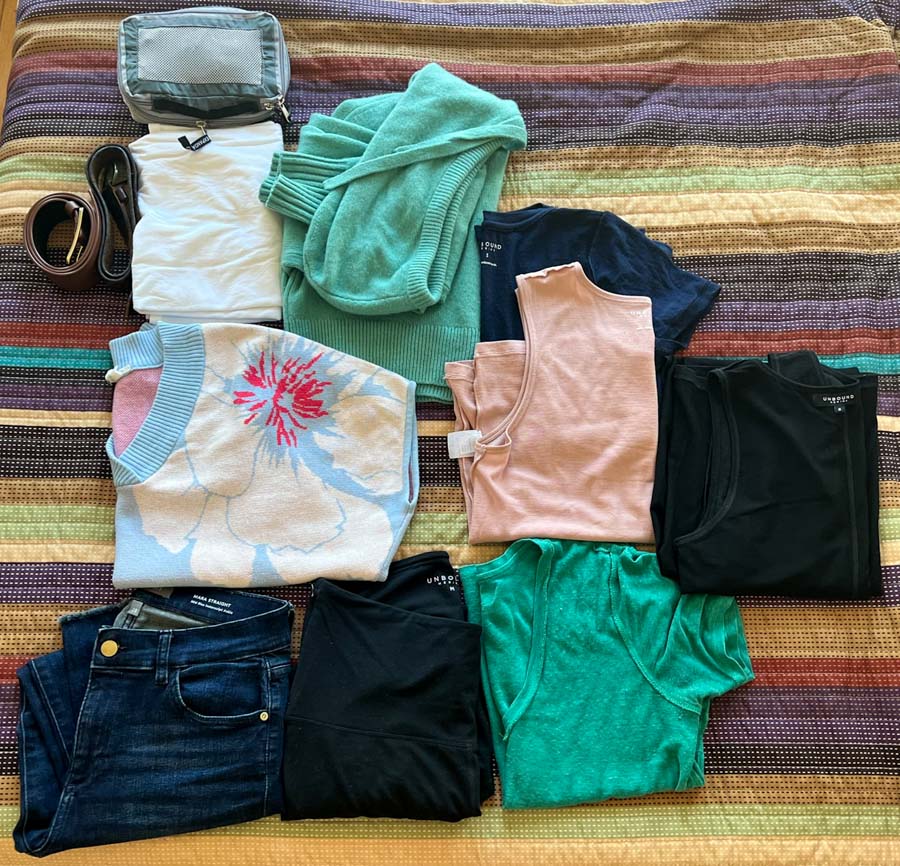
3. You don’t have to be prepared for every situation.
But what if we go to a really – like really, really – fancy restaurant? Well, is that something you’re likely to do? Have you ever done it before? Do you really think this trip will be the first time?
Okay, maybe you’re right. Maybe it will.
If a highly specific and unusual situation comes up on your trip, won’t you have time to go shopping? (Plus, that’s what the extra space in your suitcase leaves room for.)
4. Just in case you spill a plate of pasta on your pants, bring one extra pair – not three.
Your backup does not need a backup. Everything will be okay.
5. Doing laundry is easier (and less awkward) than dragging huge luggage.
I always have a hard time convincing people of this at first, but once you try it, you get it. Moving around with heavy bags is a pain. Squeezing everything back into an overpacked bag every time you change hotels is also a pain.
But doing laundry is pretty easy, and you’ve got options:
- Utilize the laundry service at your hotel – sure, it’ll cost more than it would to do laundry at home. But it’ll probably cost less than the airline’s fee for a checked bag. What you’re paying for is the simplicity and ease.
- Wash a few key items in the sink of your hotel room and let them dry overnight. I’ve been doing this for years!
- Go to a local laundromat.
For either the sink washing or the laundromat, I always pack a few of these laundry detergent strips. They’re plastic-free, and the epitome of light-weight and packable. (They’re what I’ve used at home for years now, too.)
6. Only pack comfortable, good-looking, appropriate clothing that you enjoy wearing.
This is the second biggest secret to packing light: Every piece of clothing you pack for a trip should be a piece of clothing you love to wear. Be strict on this – it has to check all four boxes:
- Comfortable to wear all day.
- Looks good.
- Appropriate / Makes sense – for the local culture, the weather, and the activities you have planned.
- Joyful! If you could wear it, but you just aren’t excited about it, leave it home! (Or better yet, find a friend who wants it or donate it.)
The sweater you always want to wear, but somehow it never feels quite right with any of your outfits? NO. DO NOT PACK IT.
I’ve written before about a phenomenon called wish-cycling (throwing non-recyclable items in the recycling bin, just hoping it’ll help). Well, I think this is a similar concept: Wish-packing. Don’t take the bait.
7. Don’t pack last minute.
If you’re packing in a rush, it’s almost impossible to be as strategic as you need to be to pack light.
But… I have a confession. Despite knowing the risks, I still do pack pretty last-minute sometimes. I’m literally typing this while sitting on a train to NYC, where I’ll be for 8 days.
When did I pack my suitcase?
About two hours ago.
How much did I pack?
Probably twice as much as I needed. (But yes, it still all fits in one carry-on.)

8. The Best Packing Test: What do you reach for in the morning when you’re getting dressed for a normal day?
If that sounds like a boring way to pack for a trip, then consider this: Are you “saving” the clothes you most enjoy for special occasions or big trips, thinking, “oh, I can’t wear that for just a casual dinner, it’s too dressy”?
Tomorrow isn’t guaranteed, so wear the dress today! There are no rules anymore, anyway. Wear what you enjoy.
Learning to pack lighter has really helped me think about living lighter, too. Why keep stuff around that I don’t enjoy and find useful? (Thanks, Marie Kondo.) If the clothes you reach for every morning are clothes you really love wearing, then packing them for a trip should be a no-brainer.
(For me, these top-quality merino wool t-shirts are a go-to that have simplified this a lot. More about those in the packing list section below.)
9. (Almost) everything is replaceable.
If you forget something you really need, you can almost always pick it up on the road, in almost any country.
Here’s what you really do need to pack:
Yes, there are a few items I’d rather not deal with replacing during a trip. Here they are:
- Credit and debit cards, including extras stashed in separate bags that are not my wallet. (One in a day pack/ personal item on the flight; one in the bottom of my suitcase, etc. Don’t keep all eggs in one basket.)
- Anything prescription, or any meds you take regularly, including extra contact lenses, birth control pills, or anything else you can’t pick up in a drugstore. (Ibuprofen, allergy pills, aspirin etc. can all be purchased just about anywhere in the world. If you know you’ll need them, pack them. But don’t pack the entire medicine cabinet “just in case.”)
- Camera equipment. Generally, I’d say don’t plan on buying a new camera/ iPad/ computer on your trip.
- Charging cables. Don’t forget them! (But don’t pack all the extras, either. You can replace them, if needed, just about anywhere. I’ve done it more than once.)
- Special clothes. Your super special dress for a wedding you’re attending, or date night on your vacation? Yeah, pack it if you have it. But don’t pack six of them.
- Comfortable shoes. There’s a special bond between a traveler and her good walking shoes (especially when those shoes are also good looking for fashionable European cities). Same goes for comfortable hiking boots. Don’t leave these to be replaced on the fly, if you can avoid it.
- Clothing you just love wearing. As I mentioned above, these items should be your entire packing list anyway. So when you start planning travel outfits, start with these items.
- Travel documents. Obviously. I’m not going to remind you to pack your passport.
And that’s it. Nothing else is irreplaceable, or will ruin your trip if you forget it.
If you carefully pack the items on the list above first, you can rest a little easier knowing that nothing else is truly necessary. Not for survival, and not even for comfort – since you’ve already packed your favorites.
10. It’s easier to buy something on the road than leave something on the road.
(This one is mostly about packing for long-term travel.)
So we agree now that we can replace almost anything during a trip. But I always find it much harder to abandon unneeded things once I’ve put them in my bag.
This is a lesson I learned from several multi-month trips across Central America, Europe and Asia with just a backpack. Each time, I realized early in the trip that I’d packed too much. And each time, it was really hard for me to just give things to someone in a hostel, or donate them locally.
Once you have an item in your bag, it can just be tough to get out of the trap of thinking, “but what if I need it for something…?”
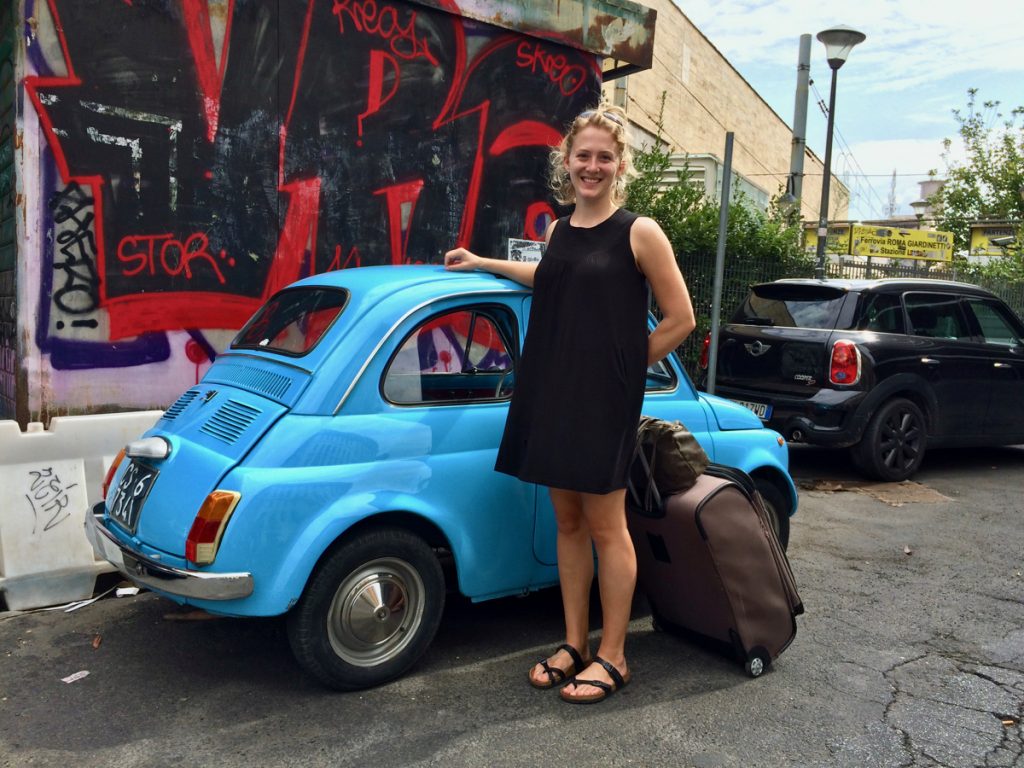
11. You’re not alone on the side of a mountain.
Let me paint a picture with a true story: A friend of mine in Montana went on a long-haul, ultra-light backpacking trip in the Canadian Rockies. The “ultra-light” part meant analyzing every ounce of her gear and cutting what you might never have thought you could actually cut – she literally cut off the handle of her toothbrush to take an ounce of weight off her back.
Creative, yes. But she ended up slicing her wrist open while chopping the toothbrush, and had to pack a whole bunch of extra first-aid supplies to keep her wound clean while it healed on the trail.
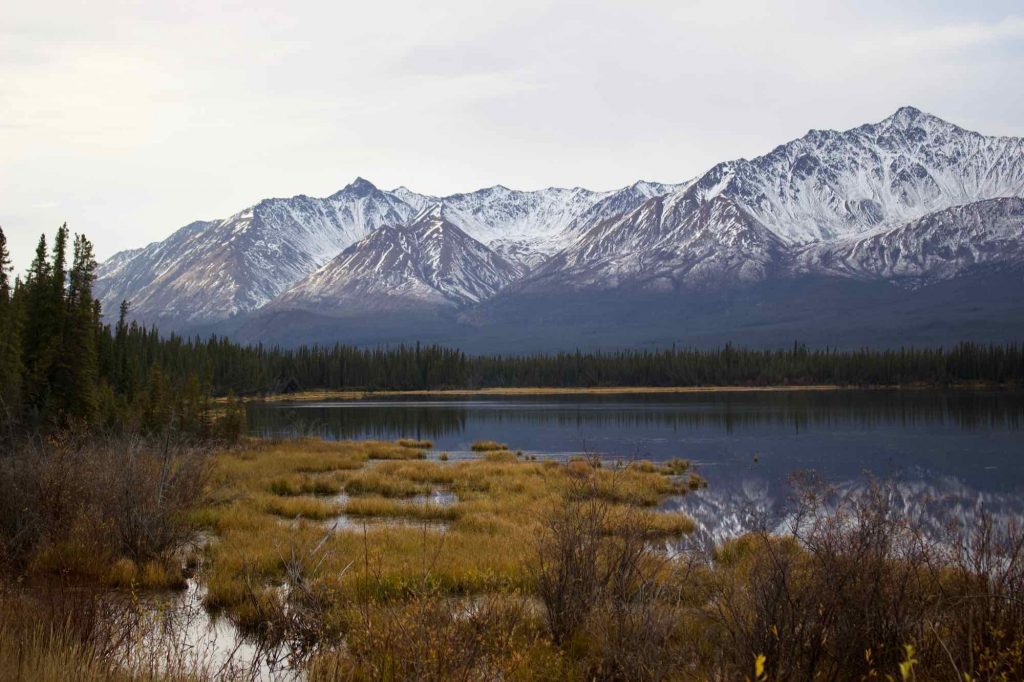
When I was thinking about this anecdote, I thought it would be a cautionary tale about trying to pack too little. And I guess it is that, but there’s another point, too:
Are you planning a backpacking trip where you’ll be alone in the wilderness for weeks at a time? If not, then remember #9. There’s very little you can’t replace on the road, if you want to.
12. Everything is temporary.
Packing light can be scary at first. It requires rethinking habits that are very culturally ingrained, and that’s not often easy.
Feeling awkward about repeating outfits more than you normally would, or anxious about not having multiple options for every day of your trip? If you are, it’s okay, and it’s temporary. (You’ll be back to your full closet before you know it.)
And who knows, you might even get used to it, and start loving the freedom of less stuff.
Remember that learning how to pack lighter is a process:
You’ll get better at it and feel better about it with practice.

Packing List: the items that will actually help you travel lighter
That was the philosophical part. Now, let’s get to the concrete part.
Again, what you pack is up to you. I don’t need to tell you how to dress, and there isn’t much that I think you need to buy to pack lighter and better.
The items below are the only ones I really recommend and use constantly. They definitely are helpful, and they work for me.
Packing cubes.
I thought they were a waste of time and money for so long, but I’m now a total convert. Packing cubes keep your clothes organized in your suitcase, and keep them neat and un-wrinkled.
And both of those things will help you feel better about packing less.
(I used to roll my clothes carefully, which is another option. But now I find packing cubes make it easier to rearrange items in your suitcase without messing everything up.)
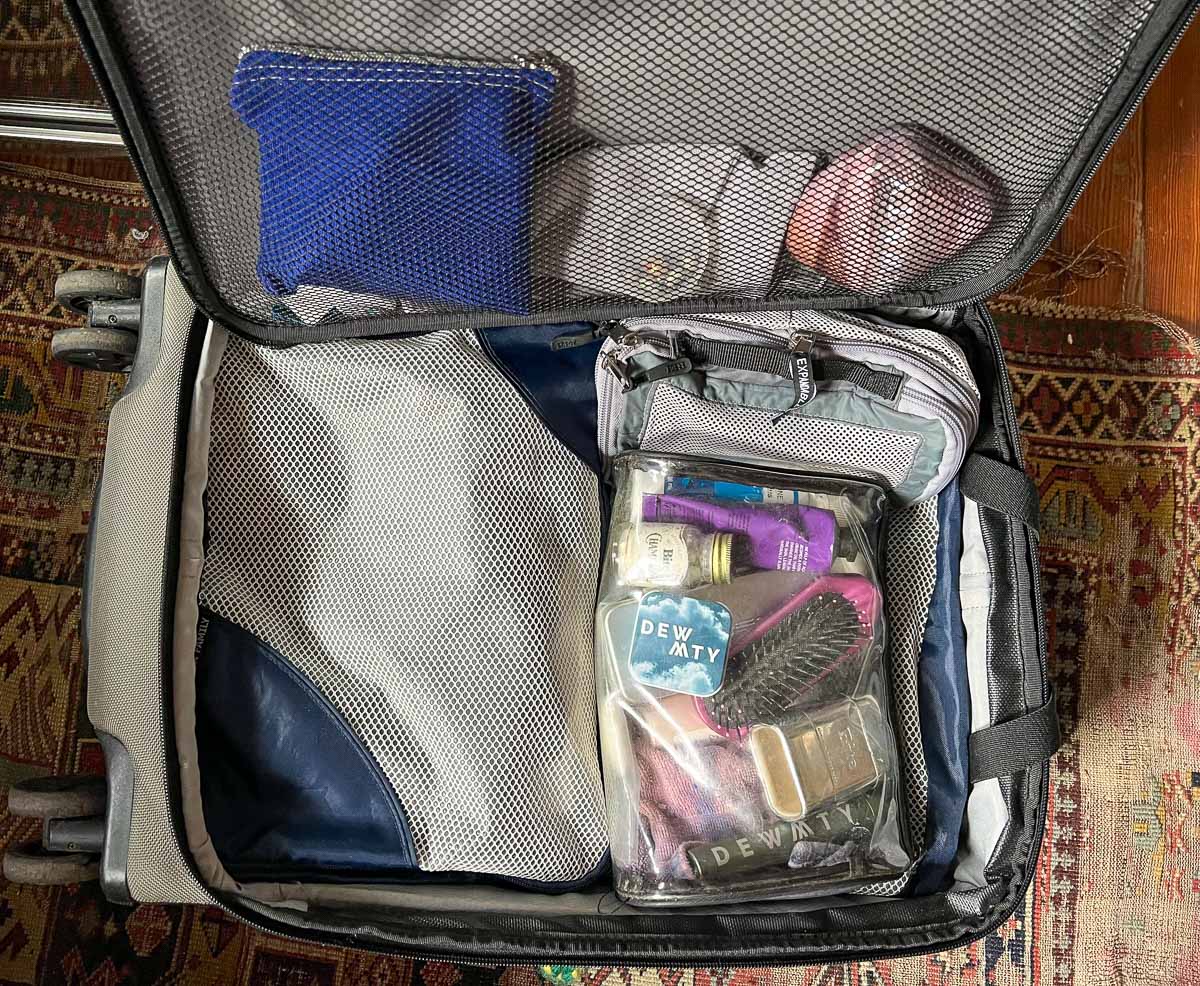
The Packing Strategy:
I usually use one small packing cube for underwear, and one larger one for my t-shirts, tank tops, and sweaters.
I rarely pack more than two pairs of pants, so I don’t usually need a separate packing cube for pants. (Unless I’m traveling to a conference, or somewhere else where I know I’ll need more pants and skirts, or dressier ones.)
The Brands to Buy:
My favorites are a previous version of these cubes from REI, which I’ve been using for years. I love that they have mesh sections for a bit of ventilation, and an extra zipper that lets you compress or expand the contents. (Which means you can keep everything snug and neatly folded, whether you’re packing less or more.)
Here are a couple more options that I’d look at if I were shopping for them now:
- New: I’ve just added one of these compression packing cubes to my collection, and I have to admit, they’re the best I’ve ever used. The construction is high quality, the shape is perfect for folded shirts, sweaters and dresses, and they fit a ton!
- These packing cubes from Cotopaxi are made of recycled fabric. (Also on Amazon.) They have colorful fabric that looks useful for organizing, but no compression.
- If I ever need to upgrade, I’ll probably go for these cubes from Peak Designs. They have lots of bells and whistles, and the brand is known for high quality. (Also on Amazon.)
Pack merino wool clothing.
In the past year, I’ve become a true believer in the value of merino wool clothing for travel.
It’s not cheap, but merino has so much going for it for travel clothing. It doesn’t wrinkle, and it stays smelling fresh after lots and lots of wears. (I tested that pretty extensively in this merino travel clothing review, and later on a one-week summer e-bike tour in Italy.)
Plus, merino wool is versatile – it keeps you warm in cold weather, and cool in hot weather (I promise). It still insulates when it’s wet, and it’s naturally antibacterial.
The Packing Strategy:
I usually pack two or three merino tops (between t-shirts, tank tops, and long-sleeved tops, depending on the season) and I mostly just wear those for an entire trip.
I’ll usually wash everything once in the middle of a two or three-week trip, but it’s often not even necessary.
Even when I pack other tops, usually cotton or linen, I find they only get one or two wears because they’re so much higher maintenance. While the merino tops just keep looking and smelling good, day after day.
The Brand to Buy:
I think Unbound Merino makes the best merino wool clothing for travel, because it’s actually designed for travel. (Not for outdoor sports, as many merino clothing brands are. These pieces are instead extremely multi-use.)
There are no logos or loud designs on their clothes, so they go with everything and look elegant, not dorky. And the cuts are simple and classic. They work just as well for hiking and biking as for visiting museums and touring cities. (I regularly wear them for all of those.)


Wearing my active merino tank top in the heat of Prague in June, and my merino travel dress during my October trip tasting organic wineries in Napa Valley.
Pack light toiletries, too.
I started down this road for environmental reasons, but solid toiletry swaps are brilliant for travel, too.
(Yes, I will forever be that friend who’s trying to get you to try a new shampoo bar, solid skincare product, or anything else plastic-free. But honestly, the friends who I manage to convince tend to like my recommendations!)
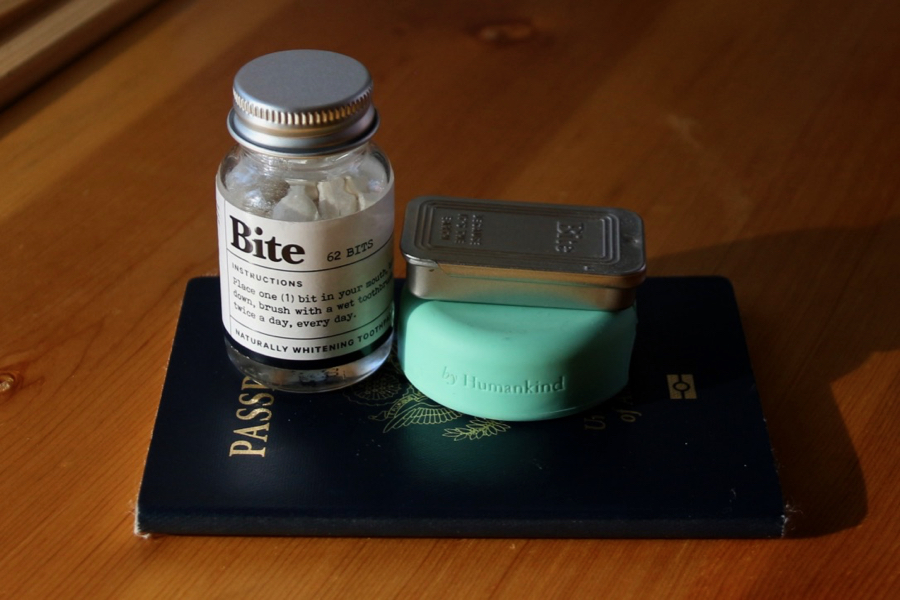
The Packing Strategy:
Solid toiletries let you pack months’ worth of products in a fraction of the space, with no chance for leakage in your bag.
They also simplify my packing lists, as I can skip buying (or bottling) “travel size” versions of all my products. (I use these same products at home, and they’re automatically ready to travel.)
And the formulas have improved so much in the past few years that it’s hard to even find an excuse not to try them. You can now get the best available hair and skincare ingredients in solid formulas with refillable packaging – which just happens to be perfect for travel!
No more bad hair days from bad hotel shampoo, or dry skin from leaving your favorite products at home.

The Brands to Buy:
These are some of my favorites solid toiletries that I pack for every trip:
- Solid skincare serums. These take the place of everything else for my travel skincare route. I love Dew Mighty, from California, and SBTRCT, a similar brand from the UK. My advice? Go with the one that’s made closest to where you need it shipped.
- More on Dew Mighty here. Read my full review of SBTRCT skincare here. Discounts: Save 10% on Dew Mighty, and 20% on SBTRCT, with the code TILTEDMAP
- Solid toothpaste and mouthwash tablets. Despite lots of comparison testing, Bite remains my favorite brand for both of these. Discount: Save 10% on any Bite order with the code TILTEDMAP10 .
- Shampoo and conditioner bars. While I’ve tested dozens, and found several I really like, personally, I keep coming back to The Earthling Co. (Discount: Clicking my links will save you 15% – it’ll show up in your cart at checkout.) (Check out my Earthling Co. review here.)
- Alternative: If you really don’t want do go the bar route, these concentrated products are also excellent and nearly plastic-free. (Check out my Everist review here. Discount: TILTEDMAP10 for 10% off any order.)
- Face wash bars. My go-to from Earth Harbor lasts forever and is harder than most bars. (AKA – easier to pack without it breaking or getting squished.)
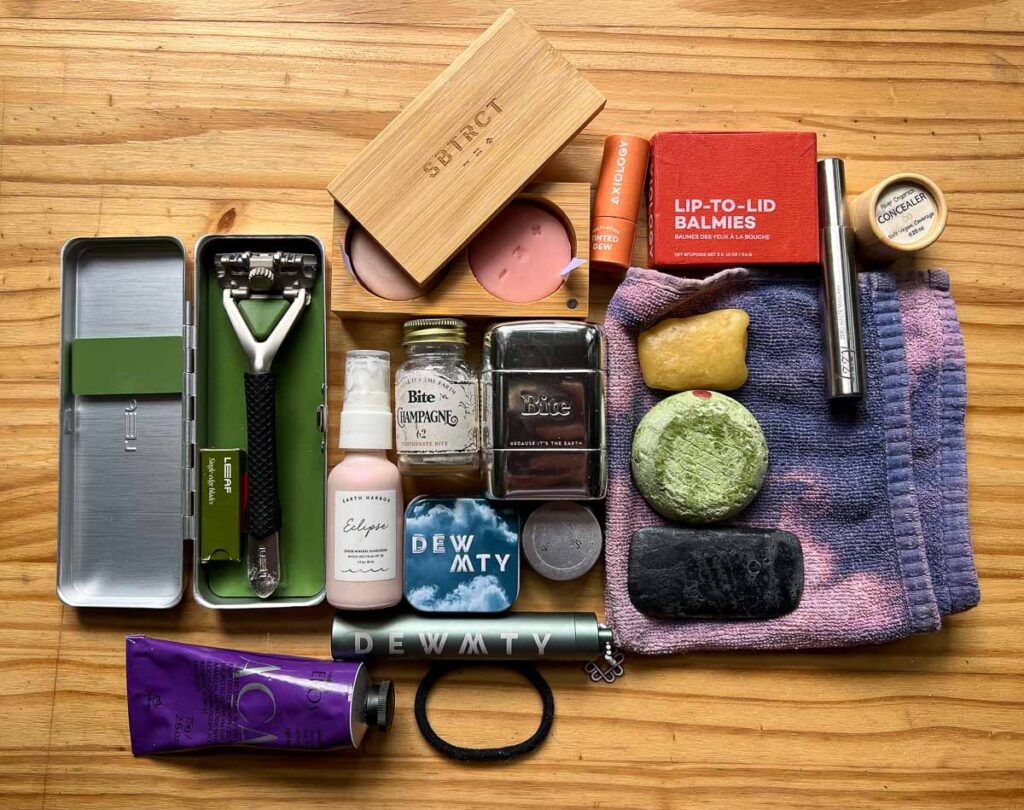
For details and the other products I use, here’s another blog post with my full plastic-free travel toiletry list.
Or, if you want to keep it short and sweet, sign up for my email list below. The first email includes a PDF checklist with just the highlights and exclusive discount codes.
Use decent luggage.
I don’t think you need to get too picky about this. If you already have a suitcase or travel backpack that works for you, there’s no need to reinvent the wheel.
The only reason I’d even recommend replacing luggage is if you’re missing some really essential, functional features. The ones I think matter are weight, pockets/ organization, smooth-rolling wheels (or comfortable straps for a backpack), and easy access. More on those below:
The Packing Strategy:
Weight
Whether you’re packing carry-on only or not, if you’re flying, you’ll have a weight limit for your baggage. (Train travel is much easier going on this.) Ideally, you don’t want to eat up too much of it with just your bag while it’s still empty.
Suitcase Example: I’ve almost never seen carry-on bags weighed in the US, but I’ve had it happen regularly on flights in Europe. Once, while flying out of Lisbon, there was apparently an 8 kg (17 lbs) weight limit for carry-on bags. The airline asked to weigh mine at the gate, even though the dimensions met their requirements.
It clocked in at a way, way overweight 23 kg (51 lbs). And the airline fined me 125 euros on the spot.
A lighter bag definitely wouldn’t have helped that time, but it’s worth paying attention to.
Organization
Packing less gets way easier when you know where everything is, and can keep your clothes neat and wrinkle-free and by making sure they don’t get scrunched into knots in your bag. Packing cubes and decent pockets are both useful for this.
Backpack Example: I’ve taken several multi-month trips with the Osprey travel backpack that you see so often in airports. (If you just automatically notice these things the way I do… occupational hazard, I suppose.) It has a detachable day pack, and it comes in multiple sizes. There’s also a men’s version.
I loved the concept, but the main bag didn’t have a single pocket to organize your stuff. And the day pack was just so tiny, I found it almost useless. (For details on this, read right here.)
Osprey has since added at least one interior pocket to the updated version, but I still went for this Tortuga backpack instead, on a recent trip to El Salvador. (As I wrote in my review, the bag definitely exceeded my expectations.)
UPDATE: Check out Tortuga’s even-lighter new Travel Backpack Lite, and their excellent, packable daypack. I’m traveling with both right now to test them, and have been impressed! (Here’s my comparison of the Tortuga Pro vs Lite backpacks.)

Comfortable Wheels or Straps
Smooth-rolling wheels are important, too, just like a comfortable strap system if you’re traveling with a backpack. Straps that make your shoulders hurt, or a roller bag that’s always flipping over behind you, or doesn’t roll straight, will get old fast.
For a suitcase, upgrading from an old two-wheel bag to a newer one with four wheels will make a huge difference.
For a backpack, make sure you have a sturdy hip belt system, which takes the weight off your shoulders and makes it much more comfortable to carry, even if only for an hour at a time. (This is one many reasons I decided the Tortuga 40L Pro backpack was worth the price for me.)
Easy Access to Your Stuff
This is mostly an issue with travel backpacks, not suitcases. I’ve never felt the need to try a clam-shell suitcase (the kind with the main zipper in the middle, dividing the storage into two equal halves). Traveling with a small carry-on, I don’t find it necessary.
Backpack example: There are a lot of good reasons not to travel with a backpacking backpack (which will likely have top-access, as opposed zipping all the way open, as a suitcase would). You don’t want to have to pull everything out of your suitcase to get to one thing, and that’s pretty much how outdoor backpacks are designed.
So the full-access zipper was one of the things that drew me to that Osprey backpack, above. But then the lack of organization made it a failure in my book.
The Brands to Buy: (Best Carry-on Luggage)
If I were to go back to backpack travel regularly, I’d stick with either the Tortuga Pro backpack or the new Lite version, both of which I’ve used on several trips lately. They’re purposefully designed for traveling light, with lots of organization and security features, plus the suitcase-like full zip.
[Details: Here’s my full review of the original Pro Tortuga travel backpack, including my comparison with similar bags from Cotopaxi and Osprey. My thoughts on the Pro vs. Lite bags are here.]
For a light-weight and really well-made carry-on suitcase, I’ve been using an early version of this Victorinox global carry-on for years. I’d definitely say it’s a good buy, at least if you travel as much as I do, but it is an investment.
That being said, it doesn’t have any broken zippers, holes in fabric, or really any signs of wear after more than five years (and I’ve lived out of it almost half of that time).
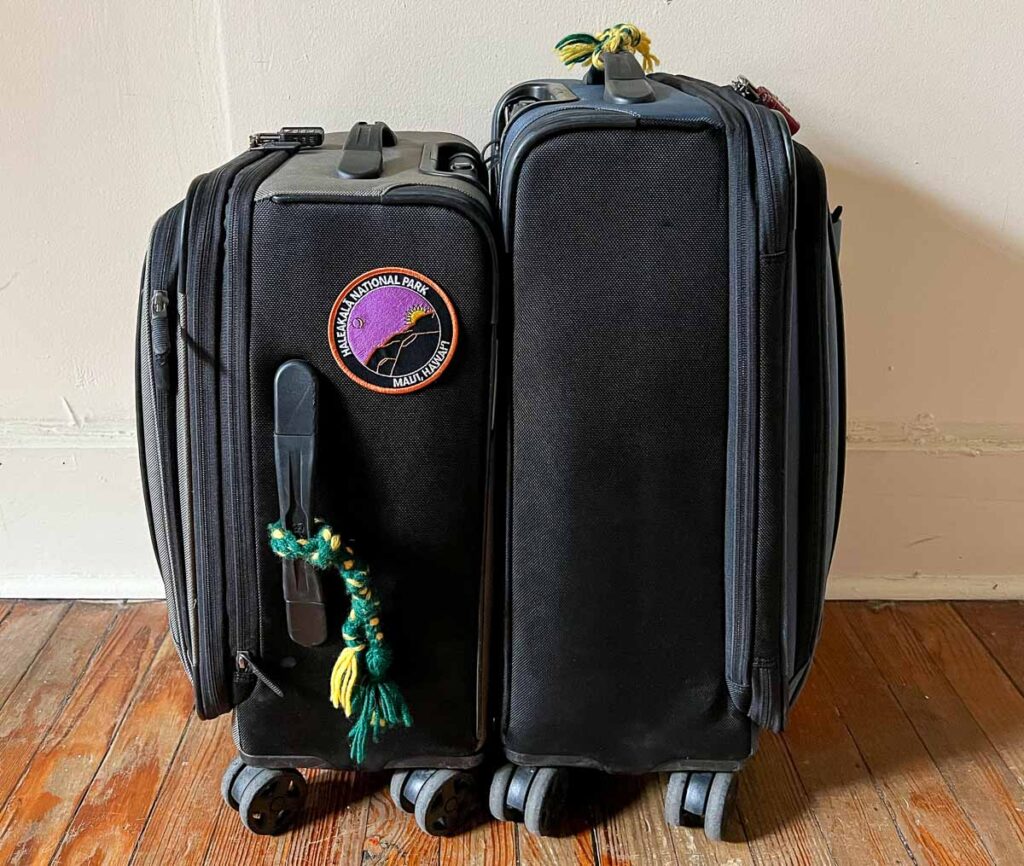
And in the long-run, buying something good once is always better than buying cheap and having to replace it. (It’s a better experience, and it’s less of a toll on the environment.)
(My “global” carry-on is designed to pass as carry-on size on European airlines, too. So it’s slightly smaller and squarer, as opposed to rectangular, compared with larger US carry-ons. My husband has the larger version, and we can confirm from many EU flights that his often has to be checked at the gate, while mine always makes it on.)
I hope my travel tips for packing less have been helpful for you! Do you have questions? Leave them below in the comments and I’ll get back to you.
Want to put these packing tips to use?
How about in one of these gorgeous destinations:
- The Azores – a beautiful, quiet escape in the middle of the Atlantic. (Including the island of Terceira, which I wrote a more detailed guide to.)
- An Italian bike trip through a lesser-known region (and you can join me on this trip, too!)
- The Mississippi Blues Trail
- Adirondack State Park, upstate New York

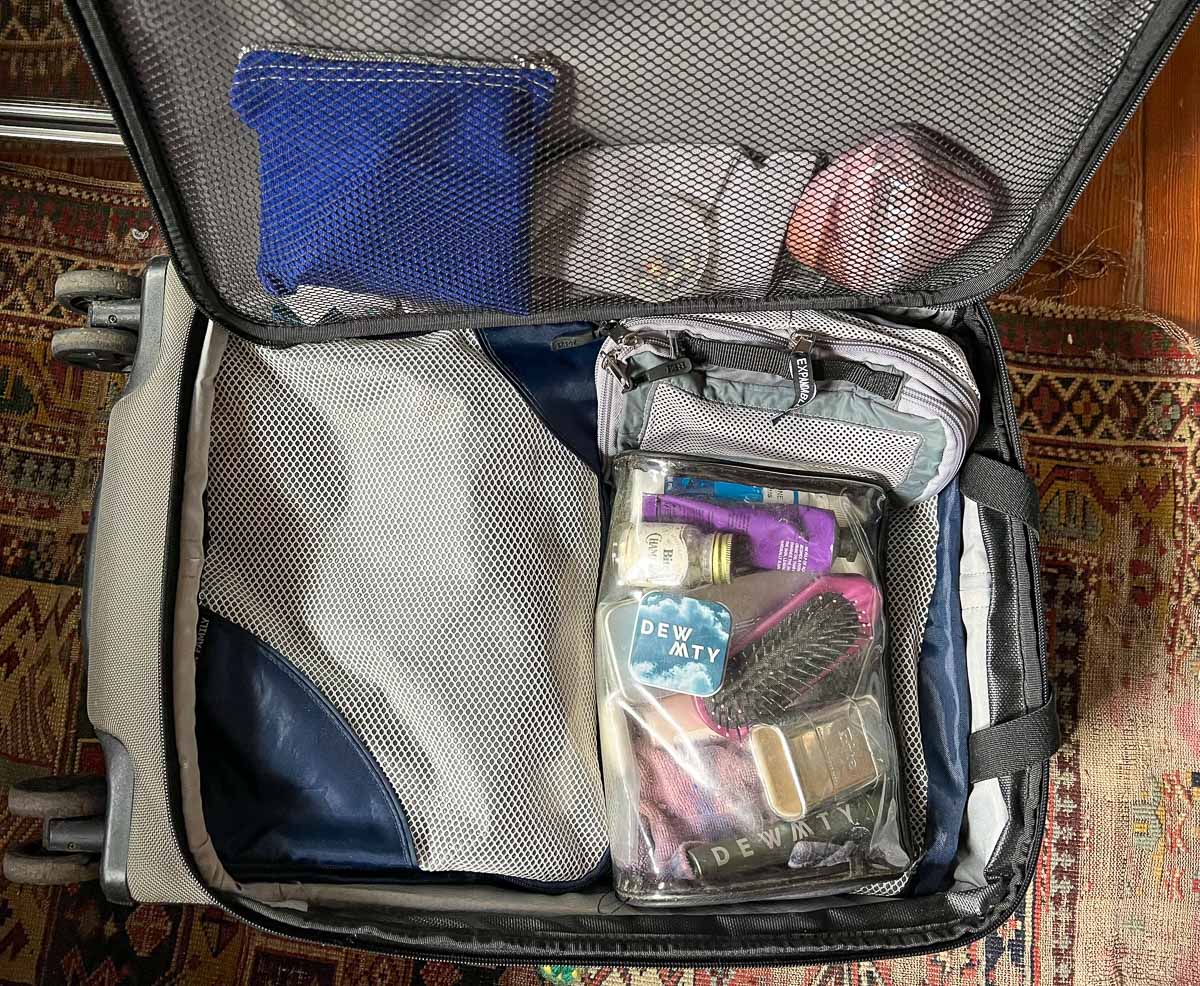



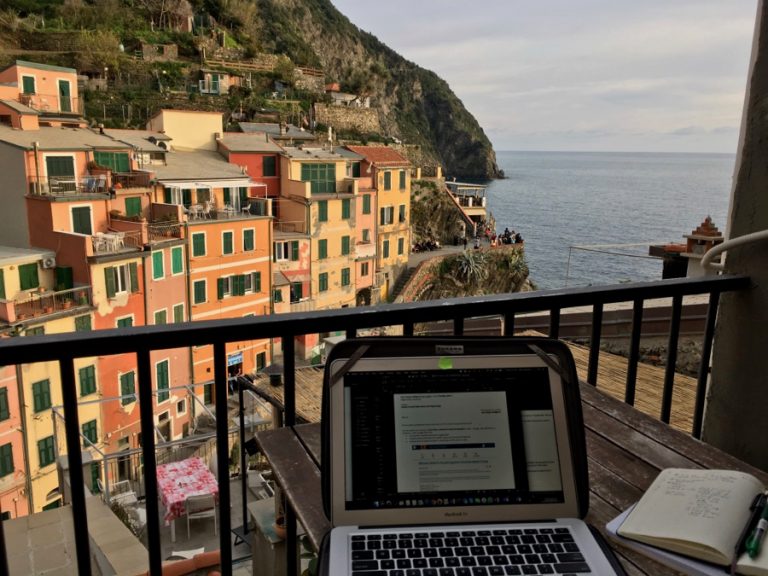
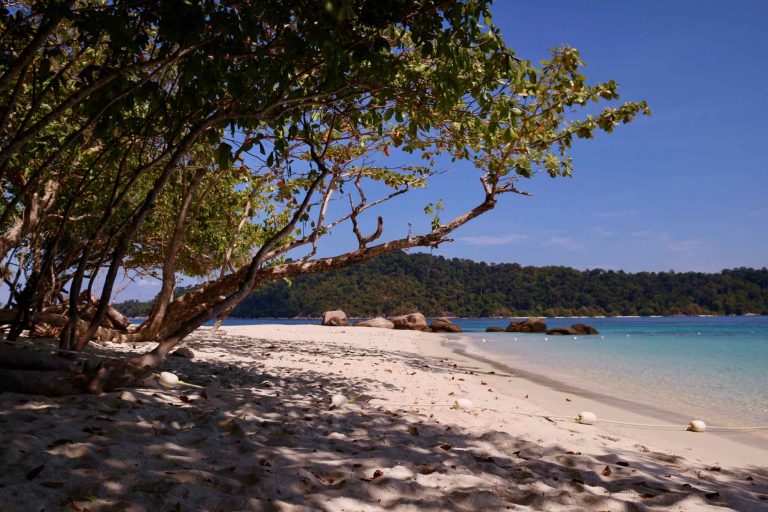
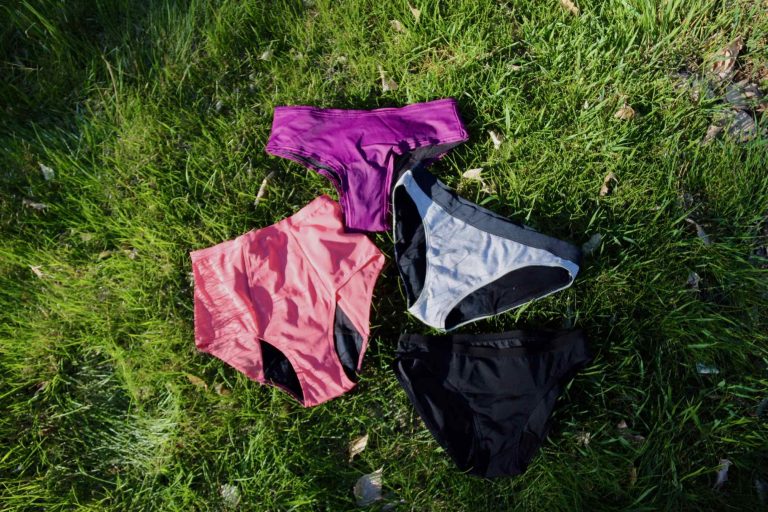
I just found your blog and your travel tips are the best I’ve ever read. But I have a question. My husband and I will be going on an extended trip from May to July, starting with biking in France and Germany, followed by an 11 day cruise in the Greek islands, and some stops in between to see Italy. My big dilemma is shorts! I will pack at least two pairs of bike shorts but I’ve no idea what type of shorts I should pack for southern Europe. Linen does not hold up well. Any suggestions?
Hi Kathleen,
Thank you so much! That makes my day. 🙂 And that sounds like an EXCELLENT adventure you’ve got planned!
For shorts, I usually pack pairs when I travel in the summer: One pair of board shorts, which are great for the beach but can also blend in not on the beach. And one twill pair for cities/ everything else. (Thin, summer-weight – lighter than denim, heavier than linen – so it’s not too bulky to pack. And they go with everything.) I have a cute striped pair from Carve Designs that I’ve been wearing for nearly a decade! The specific design is long discontinued, I’m afraid, but I’m still a huge fan of the brand. Almost everything I wear in summer is from them – very mix and easy, easy, casual/slightly sporty, packable but still stylish.
Also, their reversible swimwear is great!! I have two of this bikini top, which can easily double as a sports bar and is great for being both cute and not letting your boobs fall out if you’re actually planning to move.
Now you’ve got me thinking about shopping and summer weather lol. Anyway, I hope that’s helpful! You might also want to check out my sustainable clothing brands list, and – since you’re biking, too! – this story about the bike trip in Italy I did last year.
Have a good one!
– Ketti